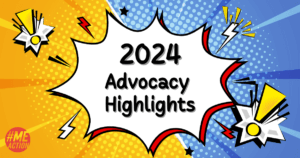Chronic fatigue syndrome (ME/CFS) and fibromyalgia (FM) have a long, long way to go before they get the attention and resources they deserve. It would take a heroic leap to quickly achieve what people with these diseases deserve and what the diseases themselves – given their economic costs / burdens they impose – should receive. So much needs to be done (funding, doctor education, drugs, other treatments) – and we’re coming from such a low place – that it seems almost impossible that it can be done in a reasonable amount of time.
In fact, people do the impossible – make what seems at first to be inconceivable differences in one area or another – all the time. This blog is about a man who did that, and did so in a way that may directly help those with chronic fatigue syndrome (ME/CFS) and fibromyalgia.
“Epic Measures: One Doctor. Seven Billion Patients” by Jeremy N Smith is about a man, Chris Murray, with an impossible goal – to accurately chart the health issues facing everyone on the planet. Murray has tried – and is succeeding – in doing what ME/CFS and FM advocates are trying to do on a smaller scale – to bring the true burden of illness out of the fog of incomplete, inaccurate and confusing statistics.
In doing so he’s created one of the largest scientific projects ever. It’s on the scale of the Human Genome project. He’s also a fascinating character. Confident, blunt, unbelievably hard-working, precise, committed, smart, collaborative, far-thinking. Murray both inspires and ruffles feathers where-ever he goes. It’s Murray that had the audacity to ranked the mighty, unbelievably expensive U.S. healthcare system 37th in the world.
Murray’s story of his struggle to identify and combat the immense and then largely unknown health inequities in the world will surely resonate with fibromyalgia and chronic fatigue syndrome patients.
To say that Murray grew up in an unusual family would be understating things. His father – a cardiologist, and his mother – a microbiologist – got bitten by the travel bug early. By the time Murray was 15 he’d been all over the western United States, Thailand, Turkey, Lebanon, Egypt, India, Kenya, Tanzania, Uganda, and Afghanistan, and spent, all told, over a year helping his parents and siblings treat gangrene, anthrax, guinea worm infections, malnutrition, tuberculosis, malaria and more. At 17 he was at Harvard studying under E. O. Wilson. He spent his junior year in Tunisia.
Murray was and is a force. Preternaturally smart and confident, Murray’s main asset was and probably is his willingness to embrace large goals and his unswerving dedication to them. Exposed early to the horrors of medically deprived poor people in developing countries, Murray was bound and determined to something about that.
His undergraduate thesis involved how to make the whole world healthier. He began studying international economics to understand how money was allocated to improve health.
The first bump in the road came quickly. Child death, child illness, and overall mortality figures – none of them added up. UN and World Health Organization (WHO) figures indicated that more children were dying every year from common childhood diseases than were dying in total. Some international health statistics cited seemed to be figments of officials’ imaginations. Life expectancy rates in countries could drop or climb enormously from one year to the next. At some point the UN decided that every county in the world would experience an increase of 2-4 years in life expectancy every five years, and simply tacked that number on to their estimates.
These mismatches bothered few at the WHO or UN who where happy to use whatever figures best promoted their projects, but it bugged the heck out of Murray. Railing both in print and in private against the use of made up numbers to assess health needs and funding, he became a pain in the butt at WHO headquarters.
With a degree in International Health Economics under his belt, Murray dug into the gap between health needs and funding. Murray’s first big finding came with his discovery of the 10/90 gap which indicated that 90% of the people with health needs (all found in the developing world) got less than 10% of health funding. (It was actually more like 5/95). That finding resonated, triggering hundreds of papers and dozens of conferences.
Click below to read more!
[button_color url=”http://www.healthrising.org/blog/2017/01/11/epic-measures-chronic-fatigue-fibromyalgia/” content=”Click here to read the rest of the article!” target=”http://www.healthrising.org/blog/2017/01/11/epic-measures-chronic-fatigue-fibromyalgia/”]






